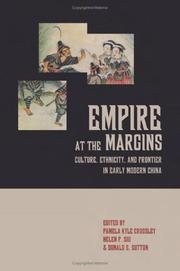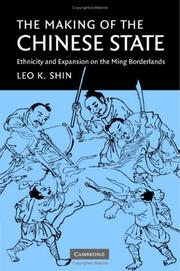| Listing 1 - 4 of 4 |
Sort by
|

ISBN: 316148567X 9783161485671 Year: 2006 Publisher: Tübingen Mohr Siebeck
Abstract | Keywords | Export | Availability | Bookmark
 Loading...
Loading...Choose an application
- Reference Manager
- EndNote
- RefWorks (Direct export to RefWorks)
296*23 --- 296*23 Talmudcommentaren --- Talmudcommentaren --- 11.21 Jewish religious literature. --- Jeruzalemse Talmoed. --- Late antiquity. --- Rabbis. --- Social relations. --- Palestine. --- Judaism --- Rabbis --- Jewish rabbis --- Clergy --- Jewish scholars --- History --- Functionaries --- Talmud Yerushalmi. --- Jerusalem Talmud --- Palestinian Talmud --- Talmud, Jerusalem --- Talmud, Palestinian --- Jerusalemische Talmud --- Talmud de Jérusalem --- Yerushalmi (Talmud) --- Talmud ha-Maʻarav --- Sepphoris (Extinct city) --- Seffurieh (Extinct city) --- Sepphoris (Ancient city) --- Sepporis (Extinct city) --- Suffuriya (Extinct city) --- Tsipori (Extinct city) --- Tsiporim (Extinct city) --- Tsiporin (Extinct city) --- Tsippōrī (Extinct city) --- Ẓippori (Extinct city) --- Israel --- Antiquities

ISBN: 1282356569 0520927532 9786612356568 1598759248 9780520927537 1423745426 9781423745426 9781598759242 9780520230156 0520230159 9781282356566 6612356561 Year: 2006 Publisher: Berkeley University of California Press
Abstract | Keywords | Export | Availability | Bookmark
 Loading...
Loading...Choose an application
- Reference Manager
- EndNote
- RefWorks (Direct export to RefWorks)
Focusing on the Ming (1368-1644) and (especially) the Qing (1364-1912) eras, this book analyzes crucial moments in the formation of cultural, regional, and religious identities. The contributors examine the role of the state in a variety of environments on China's "peripheries," paying attention to shifts in law, trade, social stratification, and cultural dialogue. They find that local communities were critical participants in the shaping of their own identities and consciousness as well as the character and behavior of the state. At certain times the state was institutionally definitive, but it could also be symbolic and contingent. They demonstrate how the imperial discourse is many-faceted, rather than a monolithic agent of cultural assimilation.
Ethnicity --- Ethnic identity --- Group identity --- Cultural fusion --- Multiculturalism --- Cultural pluralism --- History. --- China --- Ethnic relations --- S11/1210 --- History --- China: Social sciences--Works on the national minorities and special groups in China: general and before 1949 (Tibetans, Mongols etc. see Tibet, Mongolia ... but social relations between Chinese and these minorities come here) --- asia. --- avars. --- bandits. --- chinese culture. --- chinese history. --- colonialism. --- conquest. --- dan. --- empire. --- ethnicity. --- foreign policy. --- frontier. --- gender. --- guizhou. --- hainan highlands. --- han. --- history. --- imperialism. --- independence. --- islam. --- kingdoms. --- kitans. --- manchu. --- miao. --- ming dynasty. --- ming empire. --- mongols. --- mountains. --- muslim. --- nationalism. --- nonfiction. --- pearl river. --- pirates. --- provinces. --- qiang. --- qing empire. --- qing law. --- race. --- rebellion. --- religion. --- resistance. --- smuggling. --- social order. --- tusi. --- uyghurs. --- war. --- women in history. --- yao wars. --- yao. --- yunnan.
Book
ISBN: 1400828600 Year: 2006 Publisher: Princeton, NJ
Abstract | Keywords | Export | Availability | Bookmark
 Loading...
Loading...Choose an application
- Reference Manager
- EndNote
- RefWorks (Direct export to RefWorks)
People obey the law if they believe it's legitimate, not because they fear punishment--this is the startling conclusion of Tom Tyler's classic study. Tyler suggests that lawmakers and law enforcers would do much better to make legal systems worthy of respect than to try to instill fear of punishment. He finds that people obey law primarily because they believe in respecting legitimate authority. In his fascinating new afterword, Tyler brings his book up to date by reporting on new research into the relative importance of legal legitimacy and deterrence, and reflects on changes in his own thinking since his book was first published.
Punishment --- Public opinion --- Law --- Justice, Administration of --- Public opinion. --- Philosophy --- Illinois --- Adaptation level theory. --- Affective attachments, and diffuse support. --- Bargainer's dilemma. --- Bias. --- Calls to police, in study sample. --- Courts. --- Decision control. --- Decision making. --- Diffuse support. --- Disputes. --- Distributive justice. --- Drunk driving. --- Economic perspective on compliance. --- Evaluation models. --- Expected utility models. --- False consciousness. --- Favorable affective orientation. --- Formal procedures. --- Good faith of decision makers. --- Group loyalty. --- Group value model. --- Informal procedures. --- Internalized obligations. --- Involuntary contacts. --- Judges. --- Legitimacy. --- Local government. --- Motivations of authorities. --- Noninstrumental issues. --- Norms. --- Panel design. --- Parole hearings. --- Peer disapproval. --- Personal characteristics. --- Policy. --- Political psychology. --- Procedural consensus. --- Procedural fairness. --- Public choice theory. --- Public support for authorities. --- Relative deprivation theory. --- Self-interest: long-term. --- Sentencing. --- Social control. --- Social exchange model. --- Social relations. --- Sociology. --- Tax evasion. --- Telephone interviews. --- Values.

ISBN: 9780521853545 0521853540 9780511523953 9780521189897 0521189896 0511523955 0511837607 Year: 2006 Publisher: Cambridge Cambridge University Press
Abstract | Keywords | Export | Availability | Bookmark
 Loading...
Loading...Choose an application
- Reference Manager
- EndNote
- RefWorks (Direct export to RefWorks)
In this well-crafted 2006 study of the relationships between the state and its borderlands, Leo Shin traces the roots of China's modern ethnic configurations to the Ming dynasty (1368-1644). Challenging the traditional view that China's expansion was primarily an exercise of incorporation and assimilation, Shin argues that as the centre extended its reach to the wild and inaccessible south, the political interests of the state, the economic needs of the settlers, and the imaginations of the cultural elites all facilitated the demarcation and categorisation of these borderland 'non-Chinese' populations. The story told here, however, extends beyond the imperial period. Just as Ming emperors considered it essential to reinforce a sense of universal order by demarcating the 'non-Chinese', modern-day Chinese rulers also find it critical to maintain the myth of a unified multi-national state by officially recognising a total of fifty-six 'nationalities'.
Guangxi Zhuangzu Zizhiqu (China) --- S06/0240 --- S06/0204 --- S04/0670 --- S11/1210 --- China: Politics and government--Policy towards minorities and autonomous regions --- China: Politics and government--Government and political institutions: Ming --- China: History--Ming: 1368 - 1644 --- China: Social sciences--Works on the national minorities and special groups in China: general and before 1949 (Tibetans, Mongols etc. see Tibet, Mongolia ... but social relations between Chinese and these minorities come here) --- Minorities --- Ethnic minorities --- Foreign population --- Minority groups --- Persons --- Assimilation (Sociology) --- Discrimination --- Ethnic relations --- Majorities --- Plebiscite --- Race relations --- Segregation --- Government policy&delete& --- History --- Kuang-hsi Chuang tsu tzu chih chʻü (China) --- Guansi-Chzhuanskiĭ avtonomnyĭ raĭon (China) --- Kuang-hsi Chuang tsu tzu chih chʻü --- Kwangsi Chuang Autonomous Region (China) --- Guangxi Zhuang Autonomous Region (China) --- Guangxi Zhuangzu Zizhiqu ren min zheng fu (China) --- Kuang-hsi (China) --- Kwangsi (China) --- 广西壮族自治区 (China) --- Gvangjsih Bouxcuengh Swcigih (China) --- Guangxi Sheng (China) --- History. --- Government policy --- Arts and Humanities --- Minorities - Government policy - China - Guangxi Zhuangzu Zizhiqu - History --- Guangxi Zhuangzu Zizhiqu (China) - Ethnic relations - History
| Listing 1 - 4 of 4 |
Sort by
|

 Search
Search Feedback
Feedback About UniCat
About UniCat  Help
Help News
News